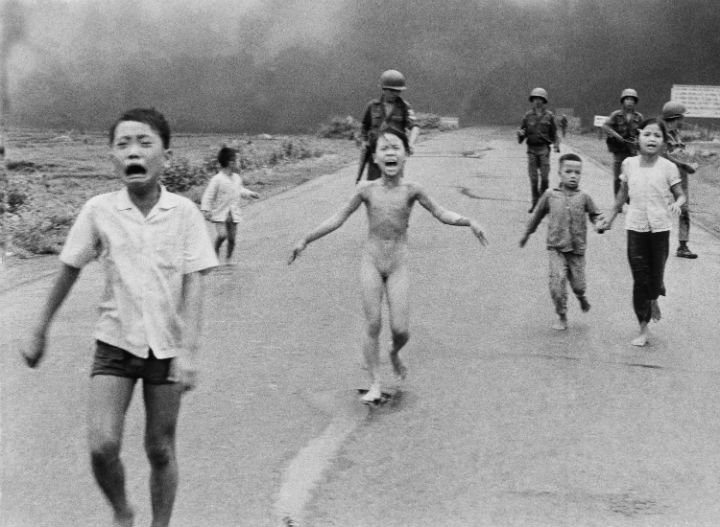WARNING: This post contains images some viewers may find disturbing. Discretion is advised.

Photojournalists sometimes capture images so powerful the public and policymakers can’t ignore what the pictures show.
This week the world was riveted by the image of 3-year-old Syrian refugee Alan Kurdi. His body washed ashore on the coast of Turkey, after the boat in which his family was trying to reach Greece flipped over in the Aegean Sea.
READ MORE: Will this photo help people grasp the desperation of Syrian refugees?
He drowned along with his mother and 5-year-old brother, Ghalib. His father Abdullah survived and has since brought their bodies back to Syria to lay them to rest.
Turkish photographer Nilufer Demir captured the image of Alan lying on the beach near the Turkish resort of Bodrum, as an officer walked over to pick up his limp and lifeless body.

That photo was shared widely on news websites and social media and the public horror prompted political leaders to respond.
“It’s not usual at all for newspaper front pages to depict a dead body,” said Patty Rhule, director of Newseum in Washington, D.C.
But this photo was different.
“The image wasn’t particularly graphic, but it was certainly powerful and very disturbing.”
READ MORE: Reality check: Harper boasts about Canada’s record on refugees, but gets some things wrong
Rhule said the decision to show the photo made it more difficult to look away “without having to pause and to think and reflect about how this policy issue is affecting human beings.”
This isn’t the first time shocking images have changed public perceptions and international politics.
“Photojournalists go places that most people don’t go in their lives,” Rhule said . “They’re bringing back images that would go unseen otherwise.”
Below are some of the works of photojournalists who did just that.
Vulture stalks child in Sudan
Kevin Carter’s 1993 photo of a hooded vulture eyeing a starving young girl opened the world’s eyes to the famine in Sudan after the image ran in The New York Times.

Get breaking National news
“The reaction to the picture was so strong that The Times published an unusual editors’ note on the fate of the girl,” The New York Times wrote.
“Mr. Carter said she resumed her trek to the feeding center. He chased away the vulture.”
Carter won the 1994 Pulitzer Prize for spot news photography.
Prisoners tortured at Abu Ghraib prison
This 2003 photo of an Iraqi detainee being tortured at the U.S.-run Abu Ghraib prison was taken not by a photojournalist, but by someone working in the now-infamous facility. Depicting an unidentified detainee, with wires attached to his body, it was one of many that led to an investigation into U.S. torture and interrogation practices.
‘The Girl in the Picture’
The photo of 9-year-old Kim Phuc running naked towards photographer Nick Ut after a napalm attack had a major influence on U.S. public opinion towards the end of the Vietnam War.
Phuc survived that attack with severe burns to her body. She know lives in Ajax, Ont. and runs the Kim Foundation — an organization working with children affected by war and conflict.
READ MORE: Napalm survivor Kim Phuc says Syrian boy photo ‘can make a difference’
‘Bloody Sunday’
Footage of a violent police crackdown on black civil rights protesters in Selma, Alabama 50 years ago played out on television screens during prime time. The images of peaceful protesters being beaten by police shocked viewers across the United States.
The terrible scenes and the movement’s persistence led to the passage of the Voting Rights Act.
The girl in the blue bra
In December 2011, nearly a year after the dictatorship of Egyptian President Hosni Mubarak was toppled, protesters once again took to Cairo’s Tahrir Square to call for an end to military rule.
When police stormed in to arrest protesters, they grabbed a young woman. As they beat her and kicked her in the chest, her covering was pulled off and her blue bra exposed. The photograph of the unknown “girl in the blue bra” sparked an international outcry and drew thousands more women and men to Cairo’s streets.
Boston fire escape collapse
- Michael Kovrig reflects on ‘brutally hard’ Chinese detention: ‘You’re totally alone’
- Conservatives set to table non-confidence motion Tuesday. What to expect
- After controversial directive, Quebec now says anglophones have right to English health services
- Something’s fishy: 1 in 5 seafood products are mislabelled, study finds
Stanley Forman‘s 1975 photograph of a young Boston woman and her 2-year-old goddaughter falling from a burning building after the fire escape collapsed forced lawmakers across the U.S. to enact new legislation concerning fire-escape safety.
Nineteen-year-old Diana Bryant died as a result of the fall, but the toddler, Tiare, survived.
Forman won a Pulitzer Prize for spot news for the photograph.
With files from Aarti Pole











Comments